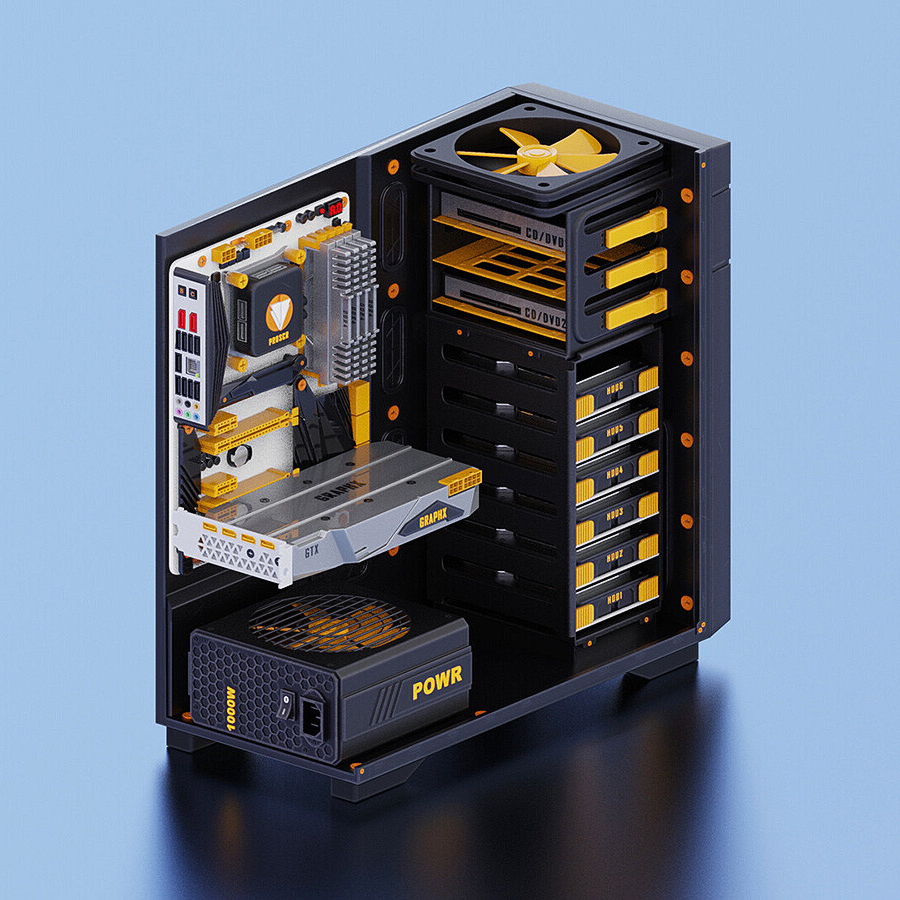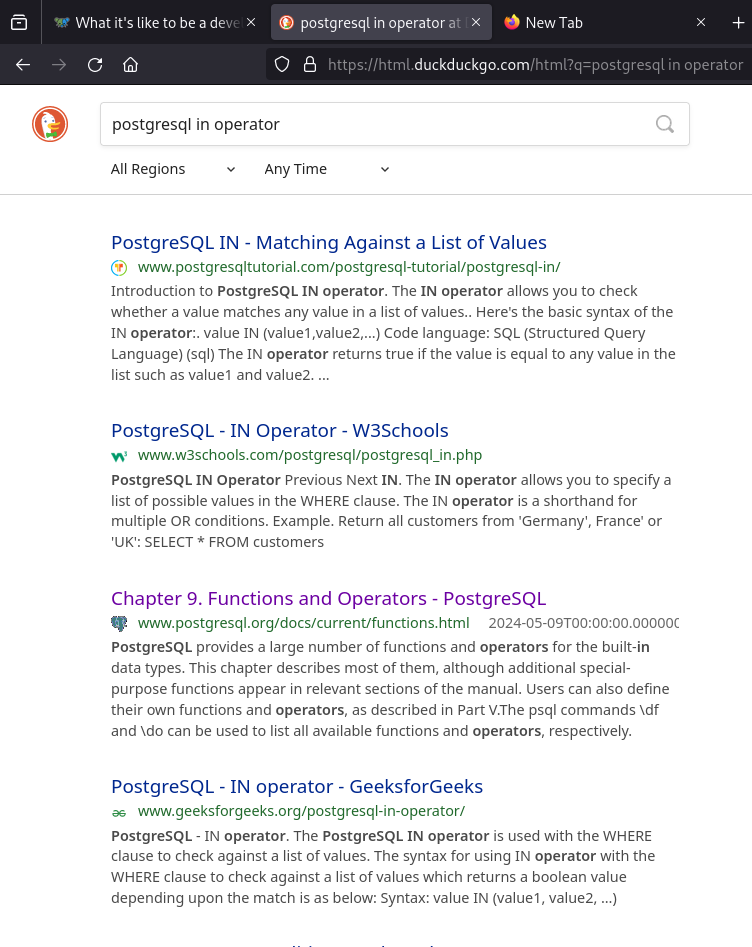#nobridge
- 2 Posts
- 201 Comments

 9·14 days ago
9·14 days agoI used to think a lot about up-gradability before but often find that when a cpu is too slow then it is also so old that I have to change the motherboard and ram too for compatibility reasons.
Same thing with the motherboard, if it fails I’ve never had it be new enough that I can bring my cpu and ram with me to my next motherboard (unless buying an older motherboard second hand).
And many of my disks will be old enough that I want to replace them too, at least if they have anything important on them.Only things I’ve brought with me when upgrading desktops have been my case (including fans), psu, gpu and (some) disks.
Having a quiet and dust proof case that is easy to build in and a good psu that https://cultists.network/140/psu-tier-list/ endorses has become higher priority to me since then, as I know they might last me more than one build.

 111·22 days ago
111·22 days agoI stand corrected, .NET Core is open source and uses the MIT License.

 32·22 days ago
32·22 days agoI stand corrected, .NET Core is open source and uses the MIT License.

 896·22 days ago
896·22 days agoAs in
“We’ve finished taking all we need from the Mono project and implemented it into ourproprietary.NET implementation for Linux, Android and iOS. Instead of getting flack for killing off Mono (which is open source and would’ve been forked anyways) we graciously give this old husk to the Wine project. We recommend that active Mono users and maintainers of Mono-based app frameworks migrate to .NET. kthnxbye!”Good thing that it went to Wine I guess, as they do lots of work to get old Windows programs up and running in Linux and that often involves Mono.

 2910·22 days ago
2910·22 days ago“We’ve finished taking all we need from the Mono project and implemented it into our
proprietary.NET implementation for Linux, Android and iOS. Instead of getting flack for killing off Mono (which is open source and would’ve been forked anyways) we graciously give this old husk to the Wine project. We recommend that active Mono users and maintainers of Mono-based app frameworks migrate to .NET. kthnxbye!”Good thing that it went to Wine I guess, as they do lots of work to get old Windows programs up and running in Linux and that often involves Mono.
I’m only running a single eGPU + USB Controller passthrough and while it took some tinkering to get it started it has been smooth sailing afterwards. The B650 series of motherboards has mostly had good IOMMU groupings so there’s a good chance your motherboard will allow you to play around with some KVM/QEMU/VFIO if you wanna try gpu passthrough to a virtual machine.
Regarding Case: Generic I would look into getting one with dust protection (bottom and front) and preferably sound proofing. Having the dust get stuck outside the computer makes cleaning so much simpler and having a quiet computer is lovely.
Personally I’m a fan of the Fractal Design Define 7 but I imagine you can get a case with the dust protection and sound proofing much cheaper than that if you take the time to look around and read some reviews, especially if you don’t need E-ATX or multiple 3.5’’ disk slots.

 41·2 months ago
41·2 months agoAlternatively, you can create new users from the command line.
This can be done as follows:If synapse was installed via pip, activate the virtualenv as follows (if Synapse was installed via a prebuilt package, register_new_matrix_user should already be on the search path):
cd ~/synapse
source env/bin/activate
synctl start # if not already running
Run the following command:
register_new_matrix_user -c homeserver.yaml
This will prompt you to add details for the new user, and will then connect to the running Synapse to create the new user. For example:New user localpart: erikj
Password:
Confirm password:
Make admin [no]:
Success!This process uses a setting registration_shared_secret, which is shared between Synapse itself and the register_new_matrix_user script.
It doesn’t matter what it is (a random value is generated by --generate-config), but it should be kept secret, as anyone with knowledge of it can register users, including admin accounts, on your server even if enable_registration is false.https://element-hq.github.io/synapse/latest/setup/installation.html

 41·2 months ago
41·2 months agoFor some reason I imagine a toilet that automates a stool test and blood test and gives you a health report every month.

 4·2 months ago
4·2 months agoInfo that could help others help you:
House or flat?
Renting or owning?
How large an area do you need to heat?
How many rooms?Temperature and savings:
Where I live they say that a house with people living in it should be at least 16°C (~60°F) to handle the moisture we generate.
Humans should have at least 18°C (64°F), preferably 20°C (68°F).
That means that you could close doors and let unoccupied rooms have lower temperature than the rooms you use.
If you’re stuck with space heaters then you’ll save quite a lot that way.

 3·2 months ago
3·2 months agoOpenWrt with 802.11r and 802.11s configured will work as a mesh network with roaming functionality.
https://openwrt.org/docs/guide-user/network/wifi/mesh/80211s
https://openwrt.org/docs/guide-user/network/wifi/roamingNot many Ruckus devices that are supported though:
Brand - Model - Supported Version
Ruckus - ZF7025 - 23.05.2
Ruckus - ZF7321 - 23.05.2
Ruckus - ZF7341 - 23.05.2
Ruckus - ZF7343 - 23.05.2
Ruckus - ZF7351 - 23.05.2
Ruckus - ZF7352 - 23.05.2
Ruckus - ZF7363 - 23.05.2
Ruckus - ZF7372 - 23.05.2https://openwrt.org/toh/start?toh.filter.supportedcurrentrel=22.03|23.05

 0·2 months ago
0·2 months agoCase:
The Fractal Design Define 7 without glass pane looks like a boring black box but the dust filters and noise cancelling is wonderful and it’s really easy to build in. I would choose that one over the North series.PSU:
I would try to up the Watt to at least 850W. The closer to 50% psu use the more efficient the psu is and the wattage that isn’t used efficiently turns into heat.
Getting a 1000 Watt Platinum PSU would result in a cooler and quieter case, but not very budget friendly.A stronger PSU also increases the chances of you bringing it with you into your next computer build, or being able to add a stronger GPU to the current build in the future.

 1·2 months ago
1·2 months agopfsense and opnsense are very similar. The pfsense devs has acted like jackasses towards the opnsense gang. They are both great for a router/firewall/vpn device. I would use external access points with them.
I think there are more addons to pfsense than opnsense.OpenWrt is great when it comes to WiFi, but I find it much less intuitive to use for router/firewall parts. Could be that I am used to the way pfsense and opnsense do things.
Neither do switching from what I know, so pair the router with a switch of your choice.

 1·2 months ago
1·2 months agoI’m so happy I went with a self-hosted Forgejo for my code repo.

 1·4 months ago
1·4 months agoAfter which ctrl+f " in" takes you to the correct chapters. I do agree that a direct link would be more helpful.
And for learning postgresql I agree it isn’t very helpful - using their tutorial links, w3schools or something like udemy if you prefer video format is the way to go in that use case.I remember back when you were told to learn to work with the documentation, not memorize it, because you will always have access to it as a reference. Maybe bookmarking reference books/documentation will make a come back as the search engines degrade.

 1·4 months ago
1·4 months agoI definitely feel the pain when it comes to worthless results nowadays. Though in this case DDG comes through:

Adding documentation to the search makes the “correct” page soar to the top:


 161·5 months ago
161·5 months agoI consider client devices to be a big risk factor and if I can keep them from having direct access to the Backup NAS and the IoT I consider that a big win. A simple ransomware attack on a client device would find any NFS/SMB shares the client can access and start encrypting - having the Backup NAS on a separate VLAN that only the server can access stops most of those from affecting the backup and makes restoring a lot easier. I would definitely recommend having an offline backup of the NAS as well in case of the server being breached.


 3·5 months ago
3·5 months agoI agree with this, protecting everything behind a VPN is the way to go. I help friends setup their vpn client to my stuff if I want them to access an internal service.
 10·5 months ago
10·5 months ago- Single switch, yes. Personally I would probably aim for a managed (must have for vlan support) switch with at least 16 ports where 8 has PoE+ (Power over Ethernet) with at least 100W total budget. The goal would be to power access points and that security camera through PoE instead of separate psus.
A cheaper alternative is to skip PoE for now and buy an 8-port managed switch now and a secondary PoE switch in the future if need be. - There are access points with VLAN support, so you can have an access point deliver multiple SSIDs that belong to different VLANs. Two things to look for here is Local Management and PoE powered. You don’t want your access points to become paper weights when the cloud management system is shut down. I don’t want to use cloud management at all to be honest.
- PoE allows you to protect your camera and your APs with the same UPS you put in to protect your network rack.
Draw up some plans beforehand, quick example where I forgot your video doorbell that would be on a separate SSID/VLAN through the APs if it uses WiFi. Which is kind of the point with drawing it up. It helps you find out what you missed.

edit: And that is just an example on how to draw it up. I imagine you want your security camera and doorbell to save video on the NAS, so then their vlan need to be able to communicate with the NAS vlan, as another example of missing stuff in the drawing.
- Single switch, yes. Personally I would probably aim for a managed (must have for vlan support) switch with at least 16 ports where 8 has PoE+ (Power over Ethernet) with at least 100W total budget. The goal would be to power access points and that security camera through PoE instead of separate psus.


Uncertain if it has all the customization you want, but check out ArcMenu for GNOME
https://github.com/tau-OS/tau-arcmenu?tab=readme-ov-file
https://gitlab.com/arcmenu/ArcMenu